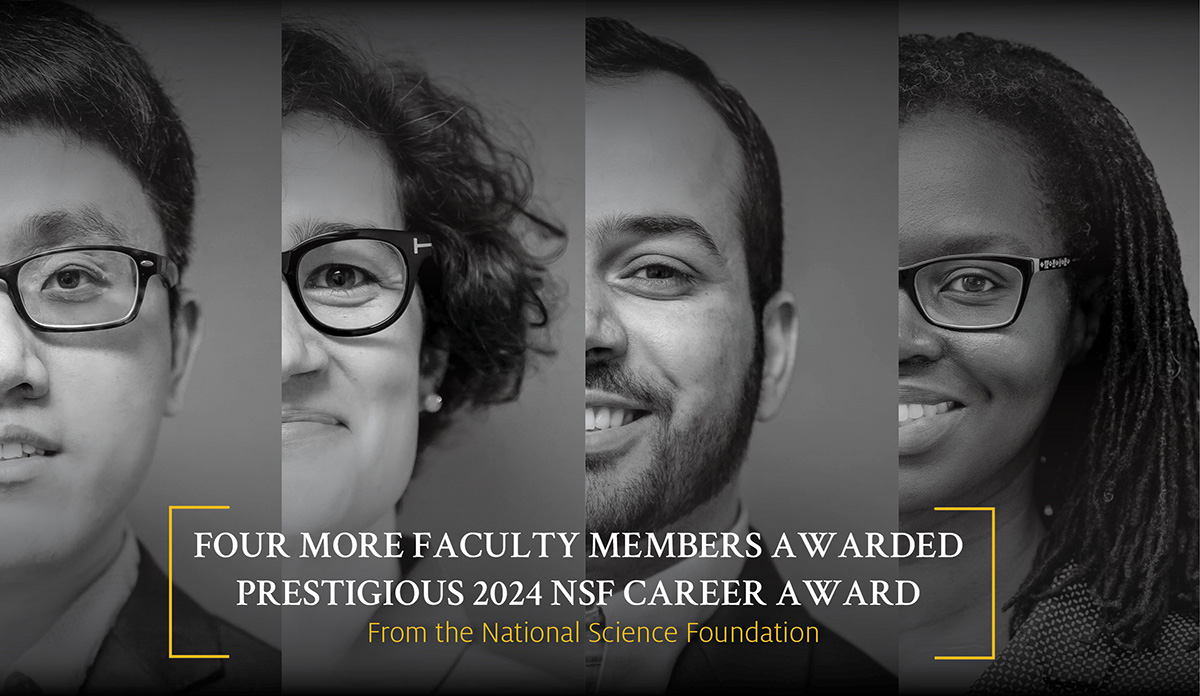
Xingpeng Li
Ensuring Continuous Quality Electricity for All
By Rashda Khan

Xingpeng Li, is an assistant professor of Electrical and Computer Engineering at the University of Houston, is working on a solution that will allow seamless integration of renewable energy sources with the rest of the power grid without causing any problems.
Li is the one of the latest recipients of the Faculty Early (CAREER) Award from the National Science Foundation for his proposal, “Frequency-Constrained Energy Scheduling for Renewable-Dominated Low-Inertia Power Systems.” The goal of the project is to ensure that evolving power systems can continue to operate efficiently and stably while supporting fast-growing wind and solar generation.
Li’s research interests include planning and operations of various power energy systems including bulk power grids and microgrids. He leads the Renewable Power Grid (RPG) Lab at UH. He is also the Associate Director of the Power Electronics, Microgrids & Subsea Electrical Systems Center (PEMSEC) at UH.
His lab focuses on energy security, transition, and transmission for both onshore and offshore energy systems. With a goal to promote renewable energy-enriched future power grids, the group proposes new models and algorithms to improve the efficiency and security of energy systems. The lab’s work also contributes to net-zero energy systems by facilitating grid integration of renewables and green hydrogen.
Marzia Cescon
Automatic Control World
By Stephen Greenwell

Marzia Cescon, the David C. Zimmerman Assistant Professor of Mechanical Engineering, has received funding for her National Science Foundation (NSF) CAREER proposal, “Data-Enabled Neural Multi-Step Predictive Control (DeMuSPc): a Learning-Based Predictive and Adaptive Control Approach for Complex Nonlinear Systems.”
Cescon described her field of expertise as automatic control — technology that controls processes in order to achieve desired behaviors.
Cescon’s research is concerned with the design of methods and tools to make a system behave in a desired way, while adapting to changing conditions and context, and ensuring safety at the same time. “We achieve that by harnessing data collected with available sensors from the system and its environment to enhance the traditional feedback control loop rooted in model-based design with learning enabled components. We apply the tools that we develop to the automated glucose regulation in people with type 1 diabetes and to the safe and assured autonomous operation of vehicles such as satellites and quadrotors drones.”
Mim Rahimi
Electrochemical Carbon Capture Research
By Stephen Greenwell

Mim Rahimi, is an assistant professor in the Civil and Environmental Engineering Department at the Cullen College of Engineering, has received a National Science Foundation CAREER award for his research proposal into liquid-liquid interfaces for electrochemical carbon capture research.
His research proposal is “Leveraging Liquid-Liquid Interfaces for Innovative Electrochemical Carbon Capture.” It was selected for $537,719 in funding, with research running through August 2029.
“The project aims to advance electrochemical carbon capture (ECC) by employing engineered soft interfaces at liquid-liquid interfaces between two immiscible electrolyte solutions,” Rahimi said. “This novel approach addresses current ECC process performance limitations, such as the reliance on costly ion-selective membranes and oxygen gas sensitivity. These engineered interfaces will be developed and optimized for enhanced CO2 separation performance and system energetics.”
This is the second significant grant that Rahimi has earned for his research into electrochemical carbon capture in the last two years. In 2023, he received $250,000 in funding from the Department of Energy to create electrochemical tubes to remove dissolved inorganic carbon from synthetic seawater.
Renita Horton
Innovative Heart-On- A-Chip Research
By Alex Keimig

Renita Horton, assistant professor in the Cullen College of Engineering’s Biomedical Engineering Department, has received a National Science Foundation (NSF) CAREER Award in the amount of $522,253 for research concerning congenital cardiac fibrosis and vascular cell dysfunction, with support through 2029.
Her proposal, “Congenital Heart on a Chip: Investigating Mechanical, Biomolecular, Cellular and Tissue-Level Mechanisms in Cardiac Fibrosis,” aims to investigate “how different cells in the heart respond to chemical and mechanical signals that cause cardiac fibrosis”, or the formation of scar tissue within the heart, via two- and three-dimensional chip-based models.
“Chip platforms offer benefits that live models wouldn’t necessarily be able to give us,” Horton said. “We can do quite a bit more manipulation with a chip model than we can with animals or people, so I see it becoming a more prominent mainstay when it comes to investigating complex disease processes.”
The organ-on-a-chip model allows researchers like Horton to isolate cells from whole-organs. This creates a simplified platform to better showcase potential direct effects, which can be challenging with whole organisms. These can include key processes of disease onset, many of which begin before an individual is ever diagnosed and are therefore difficult to study in their entirety.
